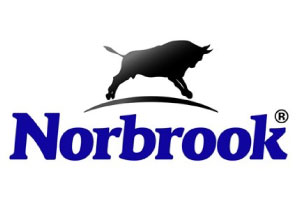

Product Ref: NBPAR22 Category: P


Royal Mail 2nd Class / Parcel Force 48
UK to UK :Normally arrives in 2-4 business days.
UK to Ireland :Normally arrives in 4-6 business days
UK to EU Countries : Normally arrives in 6-10 working days depending on where the parcel is going
Please note standered delivery is none trackable , none insured , no responsabily for lose or Damage
----------------------------------------------------------------------------------------------------------------

Royal Mail First Class / Parcel Force 24
UK to UK :Normally arrives in 1-2 business days.
UK to Ireland 3-4 business days
UK to EU Countries : Normally arrives in 6-10 working days depending on where the parcel is going
Please note :Trackable , Royal Mail insured up to £50.
--------------------------------------------------------------------------------------------------------
Parcel Force Express AM Guaranteed before Midday.
UK to UK only . UP to 5KG Max Weight
Arrives next day before 12 noon, requires a signature.
Parcel Forcel Terms & Conditions apply
Important: Parcel Force advise that there are some postcodes where an extended delivery time exists, and may affect the date of delivery or the service is not available.
| Category | POM-VPS |
| Temperature | Ambient |
| MA/VM/EU No: | 2000/4261 |
| Species |
|
| VMD Link | https://www.vmd.defra.gov.uk/ProductInformationDatabase/product/A006717 |
| NOAH Link | https://www.noahcompendium.co.uk/?id=-471242 |
| Dosage | Amounts to be Administered and Administration Route To ensure administration of a correct dose, body weight should be determined as accurately as possible; accuracy of the dosing device should be checked. Cattle: Ivermectin should be administered at a dosage rate of 200 symbol 109 \f "Symbol" \s 12.5mg per kg bodyweight (1 ml to 50 kg bodyweight). It should only be injected subcutaneously in front of or behind the shoulder using aseptic technique. A sterile 17 gauge x ½ inch needle is recommended. Sheep: Administer only by subcutaneous injection in the neck at the recommended dosage level of 200 μg ivermectin per kg bodyweight using aseptic technique. Each ml contains 10 mg ivermectin to treat 50 kg of bodyweight. Swab the septum before removing each dose. Use a dry sterile needle and syringe. Administer subcutaneously only. Inject once under the loose skin in the neck. For the treatment and control of sheep scab (Psoroptes ovis) two injections with a seven day interval are required to treat clinical signs of scab and eliminate living mites. Use of a 17 gauge x ½ inch (15-20 mm) needle is suggested. Replace with a fresh sterile needle after every 10-12 animals. Injection of wet or dirty animals is not recommended. When treating sheep of less than 16 kg seek veterinary advice regarding the use of 1 ml disposable syringes graduated in increments of 0.1 ml. For the treatment of individual sheep a syringe not exceeding 2.0 ml and calibrated in increments of 0.1 ml should be used. Pigs: Administer at a dosage rate of 300 µg per kg bodyweight (1 ml per 33 kg). The product should be injected subcutaneously into the neck using aseptic technique. A sterile 17 gauge x ½ inch needle is recommended. This product does not contain an antimicrobial preservative. Swab septum before removing each dose. Use a dry sterile needle and syringe. For 250 ml, 500 ml and 1 litre pack sizes, use of a multiple dose syringe is recommended. To refill the syringe, use of a draw-off needle is recommended to avoid excessive broaching of the stopper. Avoid introduction of contamination. Overdose (Symptoms, Emergency Procedures, Antidotes), if Necessary Cattle: Single doses of 4.0 mg/kg ivermectin (20 times the recommended dosage) administered subcutaneously results in ataxia and depression. No antidote has been identified. Symptomatic treatment may be beneficial. Sheep: Dose levels of up to 4 mg/kg given subcutaneously can result in ataxia and depression. Symptomatic treatment may be beneficial. Pigs: Ivermectin has a recognised wide safety margin and is known to be safe in all ages of swine. It has no adverse effects on fertility in sows or breeding performance of boars. Clinical signs of ivermectin toxicity in swine include tremors, bilateral mydriasis and recumbency with some biochemical abnormalities including a transient depression of serum iron. Such changes were only observed when ivermectin was administered subcutaneously at a dose of 30 mg/kg (100 times the normal therapeutic dose). |
| Withdrawals | Withdrawal Period Cattle: Meat and offal: 49 days. Do not use in cows producing milk for human consumption. Do not use in non-lactating dairy cows including pregnant heifers within 60 days of calving. Pigs: Meat and offal: 28 days. Sheep: Meat and offal: 42 days. Do not use in lactating ewes producing milk for human consumption. |